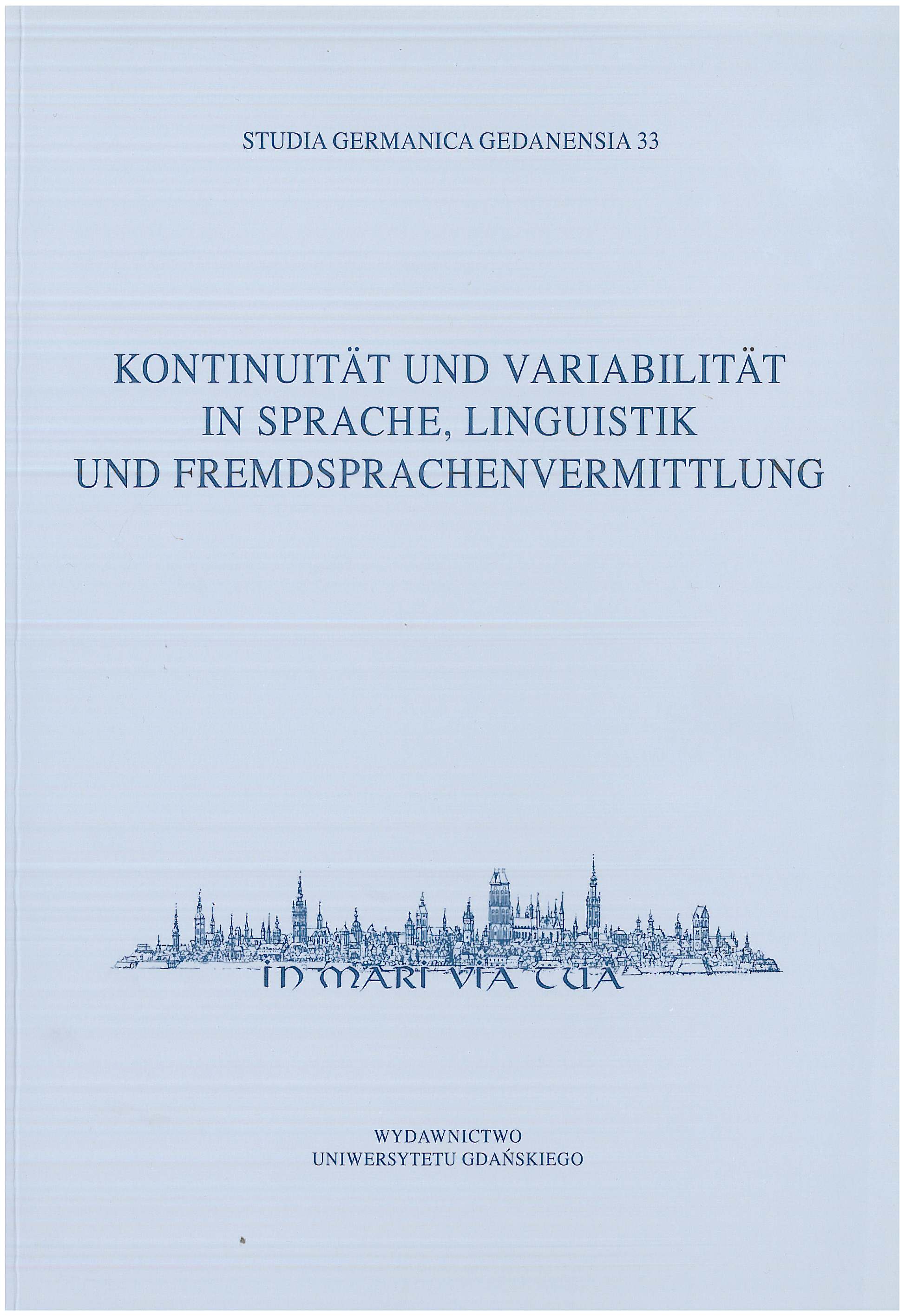Selbstlobvermeidungsstrategien in Komplimenterwiderungen der weiblichen und männlichen Studierenden. Ein deutsch-polnischer Vergleich
Słowa kluczowe:
komplement, reakcje na komplementy, strategie, zachowanie twarzyAbstrakt
Strategie unikania chwalenia się w reakcjach studentek i studentów na komplementy. Porównanie polsko‑niemieckie
W dotychczasowych klasyfikacjach reakcji na komplementy obok akceptacji i odrzucenia komplementu pojawia się grupa reakcji określana mianem self-praise avoidance mechanism (Pomerantz 1978), deflect/evade (Holmes 1988), deflating, deflecting, rejecting (Herbert/Straight 1989) czy też amendment strategies (Yu 2003). Te ostatnie łączą w sobie elementy akceptacji oraz odrzucenia komplementu i służą m.in. do przywrócenia równowagi podczas rozmowy i dbania o twarz osoby komplementującej jak i osoby komplementowanej. W niniejszym artykule poddano analizie wybrane strategie tej grupy reakcji studentek i studentów z Polski oraz Niemiec. Uwzględniono przy tym różnice uwarunkowane kulturą oraz płcią.
Downloads
Bibliografia
Chen, Rong (1993): Responding to compliments: A contrastive study of politeness strategies between American English and Chinese speakers. In: Journal of Pragmatics. 20, 49–75.
Golato, Andrea (2003): Studying compliment responses: A comparison of DCTs and recordings of naturally occurring talk. In: Applied Linguistics 24/1. S. 90–121.
Herbert, Robert K. (1989): The ethnography of English compliments and compliment responses: a contrastive sketch. In: Oleksy, Wiesław (Hg.): Contrastive Pragmatics. Amsterdam, Philadelphia: John Benjamins, 3–35.
Herbert, Robert K./ Straight, Stephen H. (1989): Compliment-rejection versus compliment-avoidance: Listener-based versus speaker-based pragmatic strategies. In: Language and Communication 9, 35–47.
Holmes, Janet (1986): Compliments and compliment responses in New Zealand English. Anthropological Linguistics 28 (4), 485–508.
Holmes, Janet (1988): Paying compliments: a sex-preferential politeness strategy. In: Journal of Pragmatics (12), 445–465.
Lewandowska-Tomaszczyk, Barbara (1989): Praising and complimenting. In: Oleksy, Wiesław (Hg.): Contrastive Pragmatics. Amsterdam/Philadelphia: John Benjamins, 73–100.
Lorenzo-Dus, Nuria (2001): Compliment responses among British and Spanish university students. A contrastive study. In: Journal of Pragmatics 33. S. 107–127.
Mulo Farenkia, Bernard (2004): Kontrastive Pragmatik der Komplimente und Komplimenterwiderungen. Aachen. Shaker.
Pomerantz, Anita (1978): Compliment Responses. Notes on the Co-Operation of Multiple Constraints. In: Schenkein, Jim (Hg.): Studies in the Organization of Conversational Interaction. New York: Academic Press. S. 79–112.
Yu, Ming-chung (2003): On the universality of face: evidence from Chinese compliment response behavior. In: Journal of Pragmatics 35. S. 1679–1710.
Pobrania
Opublikowane
Jak cytować
Numer
Dział
Licencja
Copyright by Instytut Filologii Germańskiej, Wydawnictwo Uniwersytetu Gdańskiego.

 Uniwersyteckie Czasopisma Naukowe
Uniwersyteckie Czasopisma Naukowe




